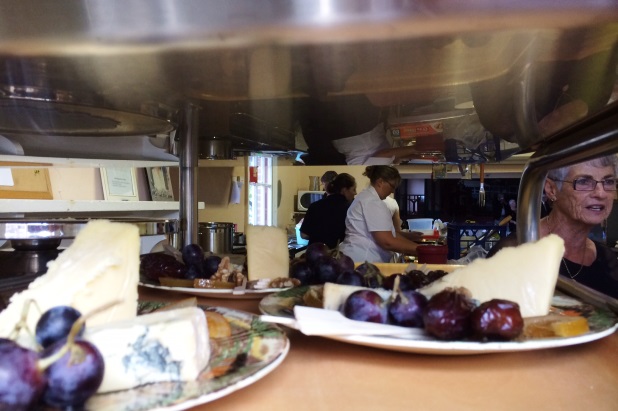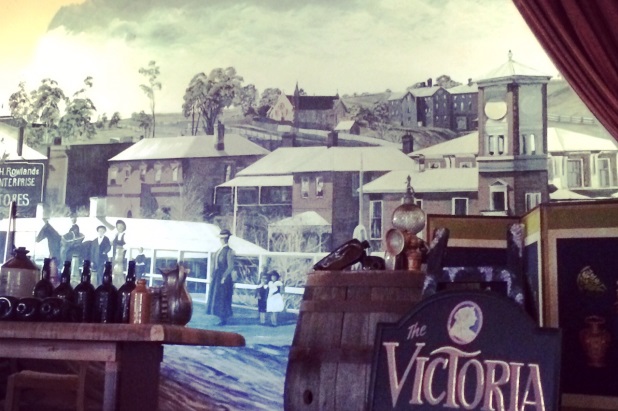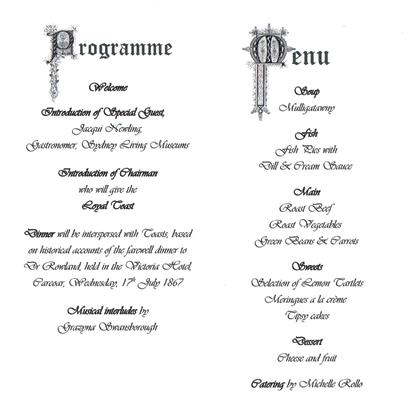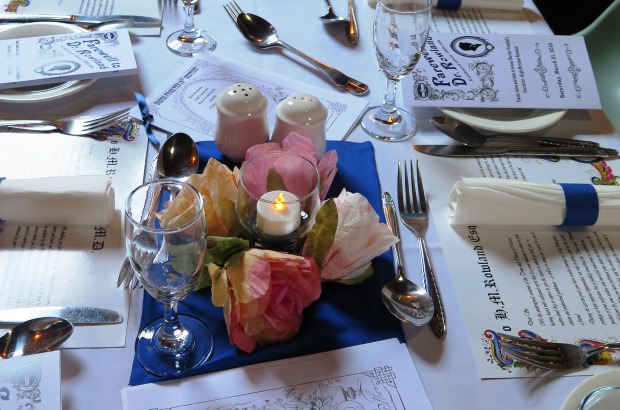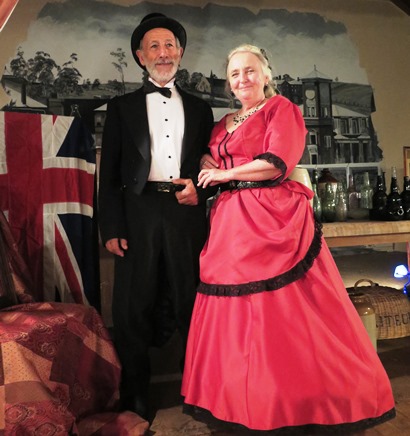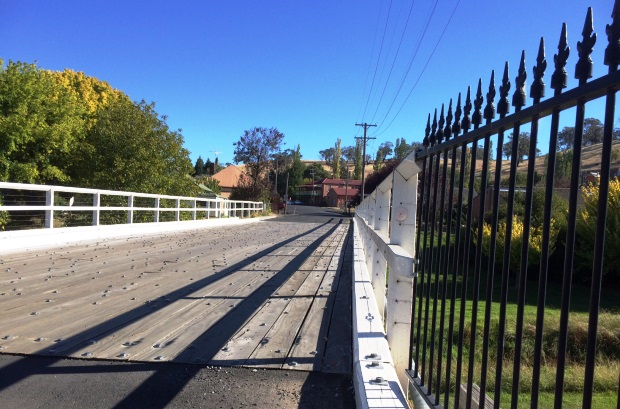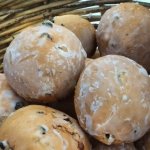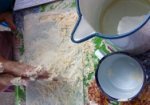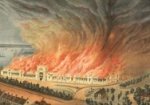Much fun and fascination was had in the historic hamlet of Carcoar, New South Wales on the weekend, when local volunteers from the Carcoar Hospital Museum captured a moment in time in the town’s history, presenting an evening of entertainment based on an actual event held in the town’s Victoria hotel in 1867.
We the undersigned, residents of the Town and District of Carcoar, having heard with unfeigned regret that it is your intention to return to your native land, beg to express to you the respect in which we hold you – a citizen and proffesional gentleman – as well as to evince our regard for you as a friend …. We hope that you may long be spared to adorn your profession, and gladden the hearts of the sick and distressed by your never failing kindness and matured skill.
Twenty four gentlemen, the who’s who and hobnobs of the district, hosted a farewell dinner for their founding doctor, Hugh Mortimer Rowland, who was returning to England after his ten year sojourn in Carcoar. The event was documented in the Bathurst Times, providing content for the evening’s proceedings, including speeches and toasts, but sadly for yours truly, no menu.
Creating an 1860s dinner menu
To remedy this, we created our own menu, taking elements from the typical dining style of the day – soup, fish, meat course, sweets and dessert. Word around town about a ‘colonial style dinner’ brought about lots of talk of boiled mutton and calf’s head soup (the subject of a future post) but as this was an auspicious occasion, nothing but premium fare would have been suitable. Caterer Michele Rollo presented an excellent interpretation, consulting first hand, a first edition Mrs Beeton’s book of household management from 1861, a friend’s precious family heirloom to ensure authenticity, and used locally grown produce, including potatoes from her own garden.
The Indian inspired mulligatawny represented the importance of Empire, and the reaches of England’s influence across the globe; the fish pie an enduring legacy of our Anglo-Australian heritage and ideal autumn fare.
The roast was always the hero of the meal, and the ‘mighty roast beef of old England’, in particular, was appropriately patriotic, and in New South Wales, with its millions of sheep, was special occasion fare, only fitting for the esteemed Dr Rowland. The sweet dishes, which in the day would have been on the table WITH the savoury dishes of the meat course, were taken from Mrs Beeton.Dessert, which differs from our idea of dessert being sweet dishes, comprised cheese, fresh and preserved fruit and other small dainties, to linger over with a richly flavoured sherry or port.
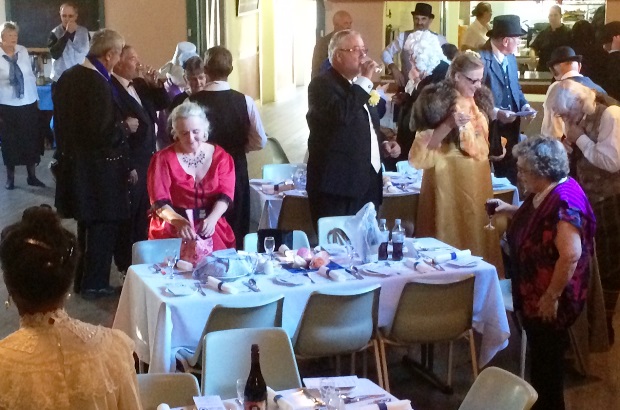
Guests gather for the Farewell Dr Rowland colonial dinner, Carcoar School of Arts. Photo © Sydney Living Museums
Community spirit
While the food was fabulous, other historical elements stole the show, and made it truly joyful experience. Organisers, Jill Cole, Rhonda Bloomfield and Margaret Hahn were given wonderful support from their local community, lending their time, energy, skills and resources, getting programs formatted, decorating the School of Arts hall, setting up tables and so on. guests embraced the concept by dressing in period costume, or for the less adventurous, wore a splash of royal blue.
Convict connections
But the real treat was the characterisation of some of the original dinner attendants, performed by local men, who read transcripts of the speeches and toasts that were published in the news report, with great fervour and flair. Dr Rowland himself as clearly honoured and humbled when presented with a silver salver (tray) and purse of sovereigns. ‘Chairman’ of the evening was local cattle breeder, Michael Cobb, a direct descendant of Barnard Stimpson, who was a significant player in the hospital’s development in its colonial hey day. Stimpson had been convicted of theft at the tender age of 13. It was his second offence, so was sentenced to hang, but that sentence was downgraded to transportation to New South Wales for seven years. Arriving in Sydney in 1833, now aged 14, Barnard was sent to work as a labourer at Coombing Park estate, owned by member of the ‘squattocracy’, Thomas Icely. In a quintessentially Australian colonial story, from these humble beginnings, Stimpson became Carcaor’s first mayor in 1879, clearly an upstanding and influential member of the community. Little would he know that a fifth generation descendant would still be actively involved in the town some 135 years later.
Villages of the heart: telling rural stories
The event took place as part of the Villages of the heart project, an initiative designed to tell local stories from rural communities, that are in danger of being lost in time. Our Eat your history theme fits well with the NSW Central West region, as it has such a rich food heritage, and is still a major food producing region. There are several community-run museums across the region, which includes Orange, Cabonne and Blayney council areas, each of them an absolute gem, with unique and extraordinary stories to tell, and well worth exploring. They will all be open on Saturday May 9, 2015 to coincide with Orange Apples festival May 9-11, so if you enjoy an escape to the country, pop it in the diary.
